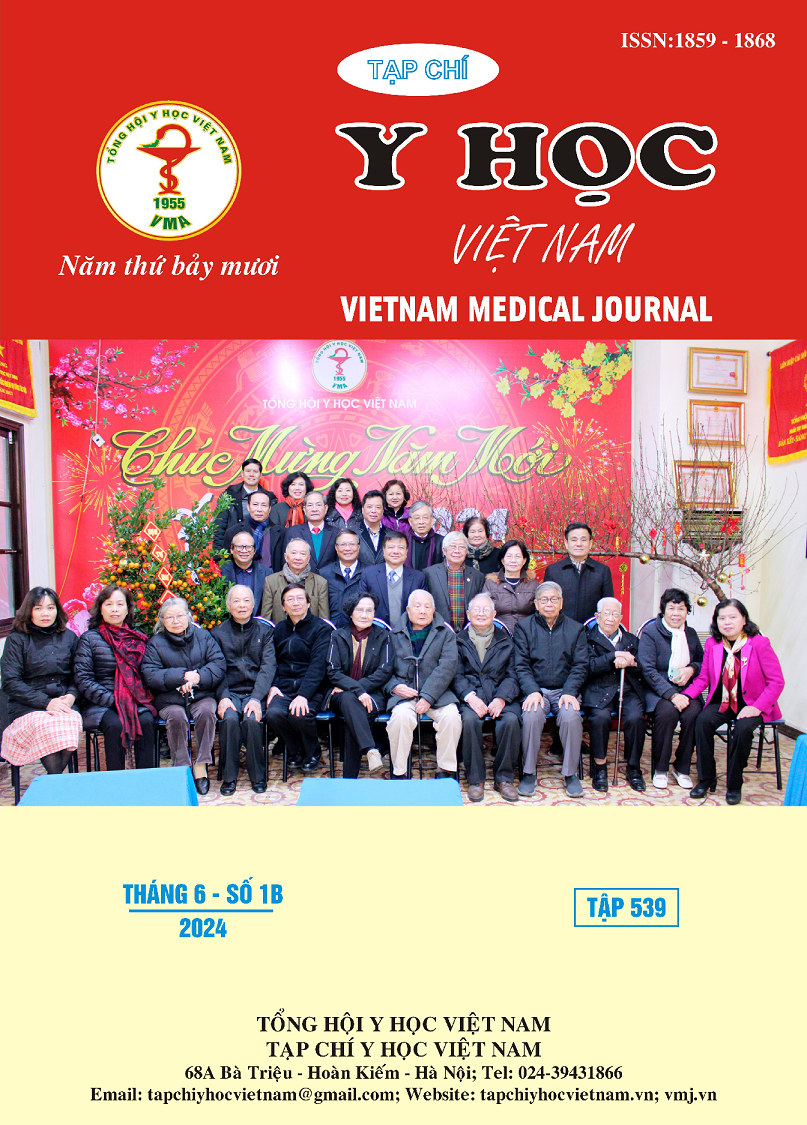DESCRIPTION RADIOLOGY OF NON-INVASIVE FUNGAL RHINOSINUSITIS: ANALYSIS 270 PATIENTS AT 108 HOSPITAL FROM 01/2019 – 01/2024
Main Article Content
Abstract
Objectives: To describe the features of non-invasive fungal rhinosinusitis (NIFRS) on CT scans to make recommendations for early diagnosis and appropriate treatment for patients. Subjects and methods: Description of a series of 270 patients who have been diagnosed with NIFRS at the department of surgery and treatment as required at 108 Hospital from January 2019 to January 2024. Their condition was evaluated radiologically with non-contrast CT. Results: Average age 52.73 ± 8.5 years old, large group is 45 - 60 years old, male/female ratio ~ 1:2, patients with chronic rhinosinusitis is the most common (40.07%), commonly encountered are office workers (35.56%) and industrial workers (29.25%), most common symptoms: post nasal drip (86.67%), cough (46.29%), unilateral fungal sinus (97.4%), one fungal sinus (94.07%), fungal maxillary sinus (94.81%). Common images on CT scan: septal deviation (61.85%), large ethmoid process (74.44%), ostiomeatal closed (95.92%), sclerosis (70.37%), calcification (76.29%), enlargement ostiomeatal unit (28.89%), enlargement sinus (18.89%), central calcifications (45.56%). Conclusion: NIFRS pathology is atypical, it is easily misdiagnosed with other chronic sinusitis diseases, so images with high suggestive value such as calcifications in the sinus cavity, thick sinus bone walls, enlargement ostiomeatal unit and sinus, CT is valuable in suggesting the diagnosis of NIFRS
Article Details
Keywords
non-invasive fungal sinus, radiologic feature of fungal sinus; fungal sinus
References
2. DeShazo RD, O’Brien M, Chapin K, Soto-Aguilar M, Gardner L, Swain R. A: New classification and diagnostic criteria for invasive fungal sinusitis. Arch Otolaryngol Head Neck Surg. 1997;123(11):1181-1188.
3. Shetty S, Chandrashekar S, Aggarwal N. A: Study on the Prevalence and Clinical Features of Fungal Sinusitis in Chronic Rhinosinusitis. Indian J Otolaryngol Head Neck Surg. 2020;72(1):117-122.
4. Ms S, S A, H N: Frequency of Granulomatous Invasive Fungal Sinusitis in Patients with Clinical Suspicion of Chronic Fungal Rhinosinusitis. Cureus. 2019;11(5).
5. Dall’Igna C, Palombini BC, Anselmi F, Araújo E, Dall’Igna DP: Fungal rhinosinusitis in patients with chronic sinusal disease. Braz J Otorhinolaryngol. 2005;71(6):712-720.
6. Seo YJ, Kim J, Kim K, Lee JG, Kim CH, Yoon JH: Radiologic characteristics of sinonasal fungus ball: an analysis of 119 cases. Acta Radiol. 2011;52(7):790-795.
7. Klossek JM, Serrano E, Péloquin L, Percodani J, Fontanel JP, Pessey JJ: Functional endoscopic sinus surgery and 109 mycetomas of paranasal sinuses. Laryngoscope. 1997;107(1):112-117.
8. Karthikeyan P, Nirmal Coumare V: Incidence and Presentation of Fungal Sinusitis in Patient Diagnosed with Chronic Rhinosinusitis. Indian J Otolaryngol Head Neck Surg. 2010;62(4):381-385.


